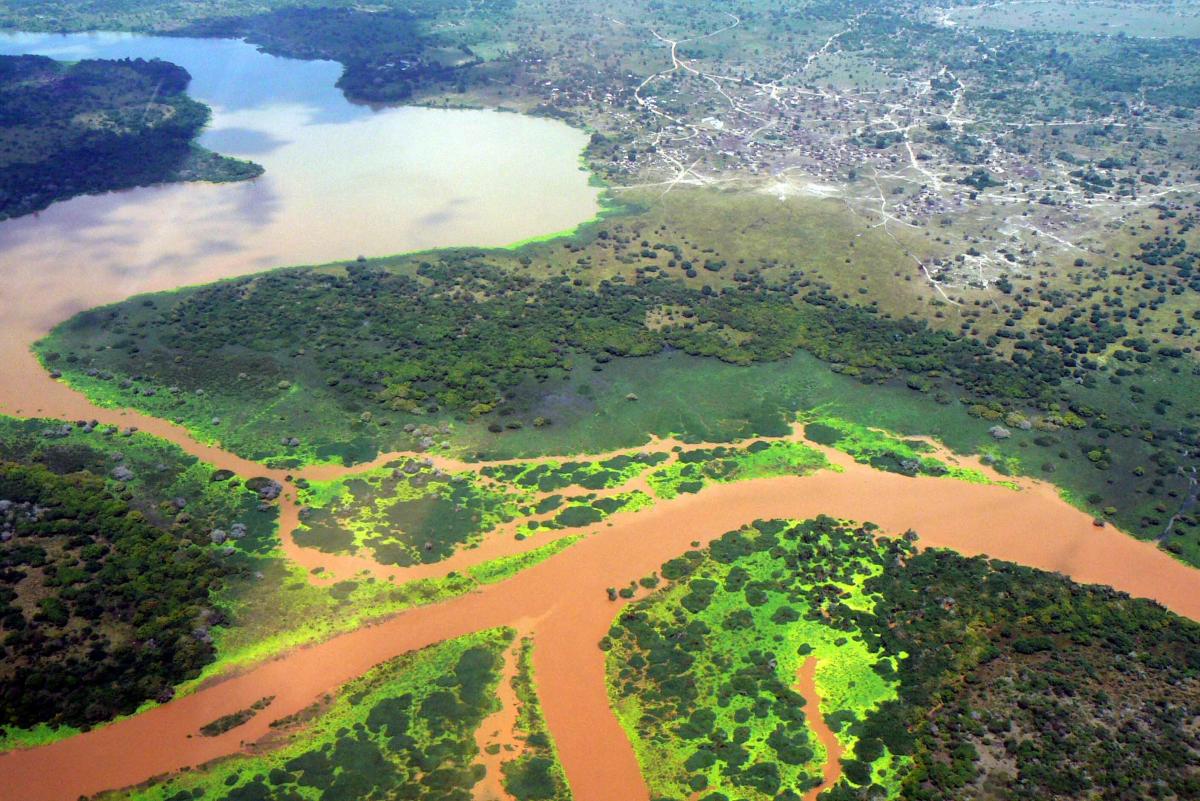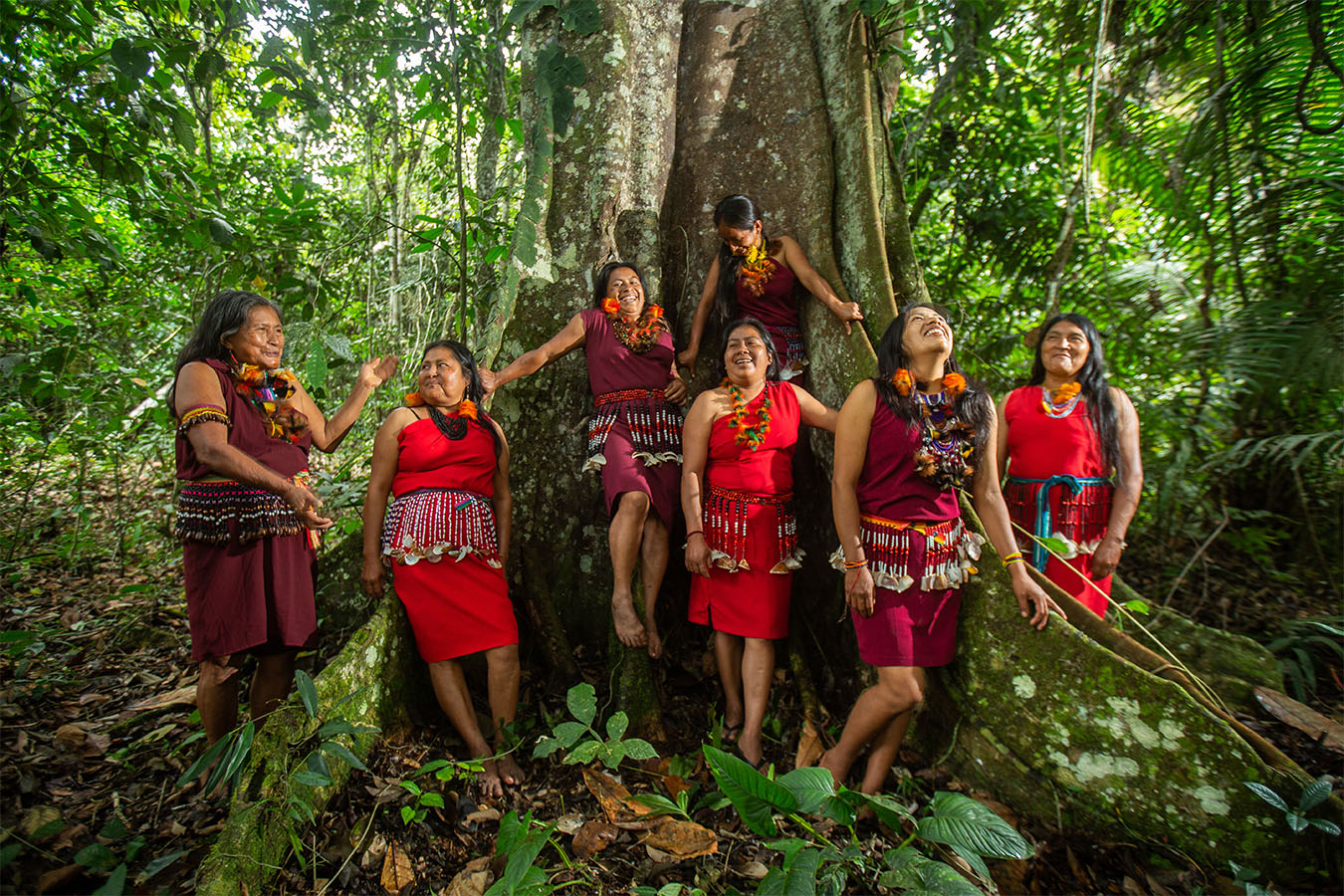The Restoration Initiative: A Kenya drylands story
A fresh start for the Mukogodo Forest Reserve, Kenya
Participatory approaches to land management are key to addressing competing land uses and preserving traditional ways of life in the harsh landscapes within the Mukogodo Forest Reserve in Kenya.
For millennia, little rain, heat waves and drought – together with human activities – have shaped the national Mukogodo Forest Reserve in Kenya. A legacy of competition over the access and control of local resources in the dry north-eastern corner of Laikipia County has resulted in mutual antagonism and conflict, with each forest user group having competing claims to the land, who can use it, and how. The Indigenous Maasai, Dorobo and Yaaku communities act as stewards and depend on the grasslands to feed their livestock. Local pastoralists and ranchers move their herds along traditional migration routes from the dry plains to Mount Kenya further south, grazing them in the reserve. Conservationists hope to limit human activity in the area to protect the habitat of numerous threatened species. Intensifying droughts make the situation in the reserve more precarious.
In 2021, northern regions received less than 30 per cent of normal rainfall and the Kenyan Government declared the current drought that started in September a national disaster. Droughts are becoming more frequent due to climate change with occurrences doubling since 1999. Demand for natural resources and land-use competition is consequently increasing – drastically. Over 23 000 ha of the reserve is now considered degraded according to the TRI Kenya ASAL project’s ROAM. With harrowing consequences on the horizon, the TRI Kenya ASAL project and its partners are promoting the use of PFM to restore the Mukogodo landscape’s vitality and empower communities through self-determination.
Creating new partnerships to stop landscape degradation
Communities need to work together behind a strategy that prevents landscape degradation, especially in the face of intensifying climatic conditions. Participatory forest management practices are essential to meeting the varied needs of Laikipia County’s different actors while advancing FLR. Participatory forest management emphasizes the importance of well-established roles, recognizes the rights of different stakeholders and stresses the importance of compromise. This approach is able to achieve forest restoration and sustainable resource use by also ensuring people are afforded a secure livelihood.
In 2021, the TRI Kenya ASAL programme continued its work bringing together CFAs, group ranchers, Indigenous peoples and the national government. As an example, the NACOFA which spearheads PFM in the country together with the TRI Kenya ASAL is reviewing the country’s policies to identify implementation gaps and future regulatory reforms. Another example is the role the TRI Kenya ASAL project plays in providing workshops to over 106 CFAs to discuss forest incentives, any benefit-sharing regulations and details within the country’s 2016 Forest Management and Conservation Act. This act defines the rights in forests, prescribes rules for the use of forest land and makes provisions for community participation. The TRI Kenya ASAL project is supplementing these workshops with training sessions in PFM methods and assessments. In all, these capacity-building events contribute to the ongoing process of establishing a new management strategy for the reserve as well as supporting countrywide efforts to improve monitoring, reporting and knowledge dissemination at the national level. Each engagement orchestrated by the TRI Kenya ASAL programme provides opportunities to negotiate shared responsibilities and the fair allocation of benefits.
Entrenching community participation and benefit sharing through PFM requires identifying synergies across partners who work directly with the Mukogodo Forest Reserve and across other project sites in Kenya. This process supports the TRI Kenya ASAL project and its partners’ central focus to bolster support for the Kenya Forest Service and for CFAs to ensure they are well governed. Ultimately, PFM enables community-level institutions that empower forest users to engage with forest restoration and the forest management plans put forward by the government. Due to its potential, in 2022, the Kenya Forest Service will renew and continue the use of this management strategy for the Mukogodo Forest area in the coming years.
Restoration in and around the Mukogodo Forest
In addition to supporting the development of new management strategies that incorporate PFM, the TRI Kenya ASAL project has made significant headway with restoration on the ground. Since 2020, the TRI Kenya ASAL project has focused on restoration in Mukogodo Forest and the associated landscape. The project has introduced over 8600 people to assisted natural regeneration and natural regeneration, the benefits of seeding with perennial grasses and the importance of monitoring livestock carrying capacity. Over 43 000 ha across project sites, which includes the Mukogodo Forest Reserve, are now under improved management and eight tree nurseries have been established to provide seedlings for plantings.
Increasing the overall tree and grass cover found within the Mukogodo Forest Reserve is crucial in helping local communities withstand the impacts of a hotter, changing climate. These plants increase the landscape’s resilience and the communities that depend on them. The trees and grasses secure the soil, preventing water and wind erosion, and ultimately, desertification – a type of land degradation through which fertile land becomes increasingly unproductive. For example, the African foxtail grass (Cenchrus ciliaris), which is being reseeded across the landscape, has a fibrous root system that is notoriously deep and strong, extending to more than two metres. Perennial grasses also help the soil retain moisture while providing an important food source for grazing livestock, such as cattle and goats, and wildlife. Restoration of these landscapes also secures ecosystem services, the varied benefits to humans that arise when natural environments flourish in their diversity and complexity.
Another key intervention resulted in multi-stakeholder engagement around the building of micro-catchments – semi-circular bunds of red soil – to help prevent water runoff.14 The longer rainwater is cradled along the contours of the bund, the more likely it will seep into the dusty landscape and provide enough water to grow crops and feed livestock. This year, the TRI Kenya ASAL project facilitated the construction of 3 700 micro-catchment bands, covering 46.2 ha in the reserve. Even more important is that participating communities verbally committed to restricting grazing in the newly tended area for up to two years. This type of social fencing highlights the collaboration between communities of different social backgrounds and a willingness to voluntarily engage in restrictions in exchange for mutual benefits. Stakeholders acknowledge their shared dependency, the need to invest in restoration and are empowered to engage with one another knowing that the management approach is crafted to advance their interests.
In 2022, the TRI Kenya ASAL project will extend its efforts by using 49 ha for hay production – to feed livestock during the dry seasons – and to plant indigenous trees around these hay farms. It will reinstate six additional high-priority water infrastructure projects with the hopes of improving water management for over 3 000 people. The same project will also facilitate access to water for harvesting and processing by bio enterprise groups. Other efforts will focus on supporting the county government to prepare a county environment action plan, finalization of the Forest and Landscape Restoration Action Plan, capacity building on resource mobilization and building the capacity of CFAs on sustainable bioenergy options for domestic use, among other things. Together with PFM, these ongoing and future restoration actions are giving the Mukogodo Forest Reserve a chance for a fresh start.
TRI Kenya ASAL project and its partners are promoting the use of PFM to restore the Mukogodo landscape’s vitality and empower communities through self-determination.
This story is from TRI Year in Review 2021



